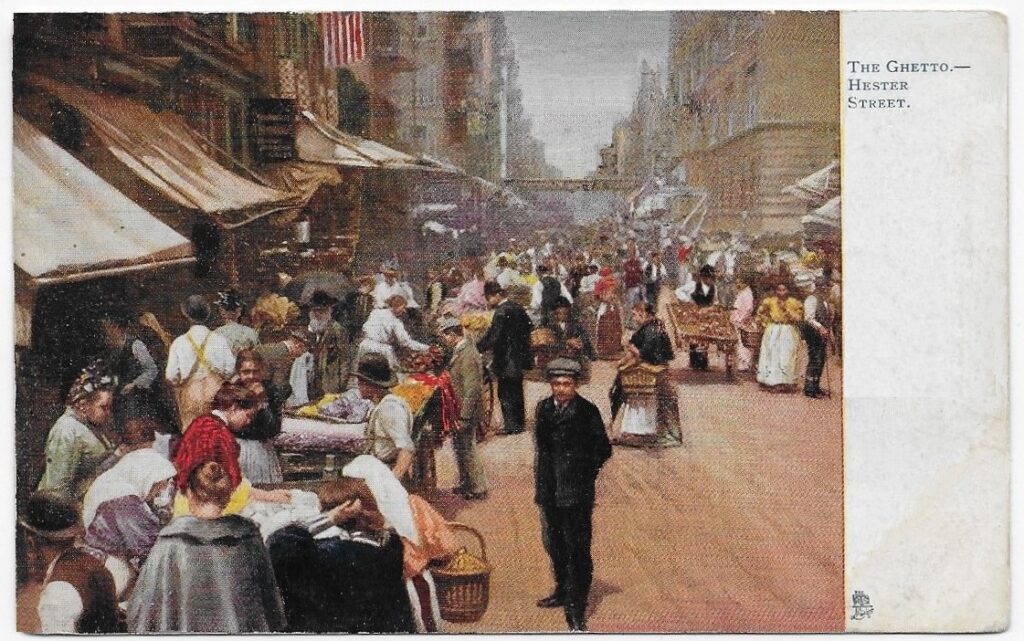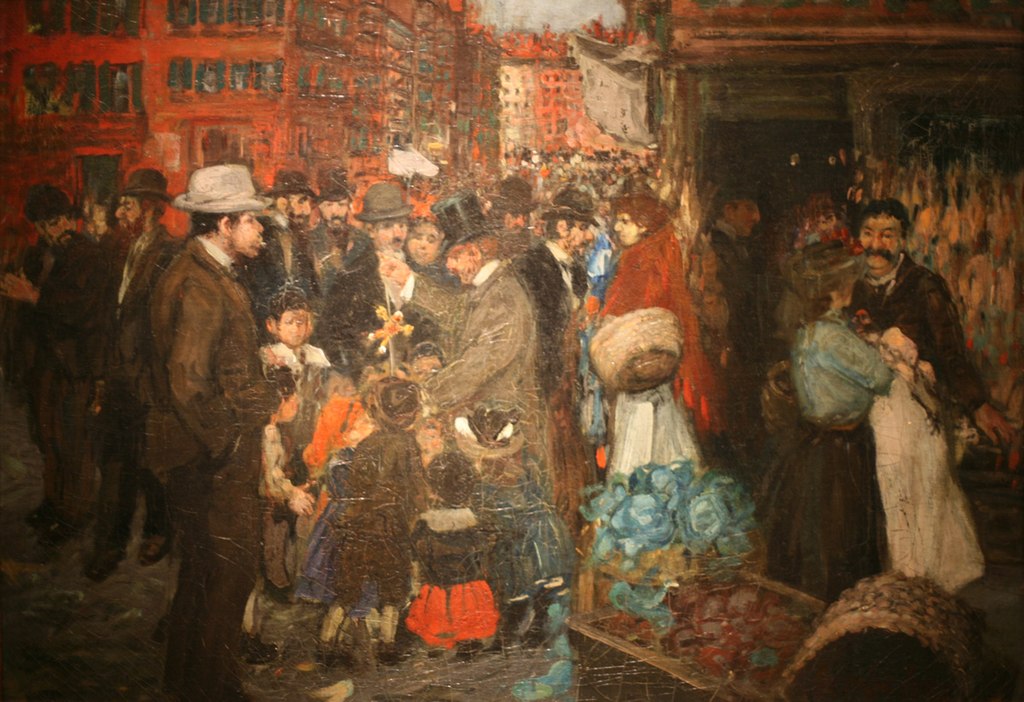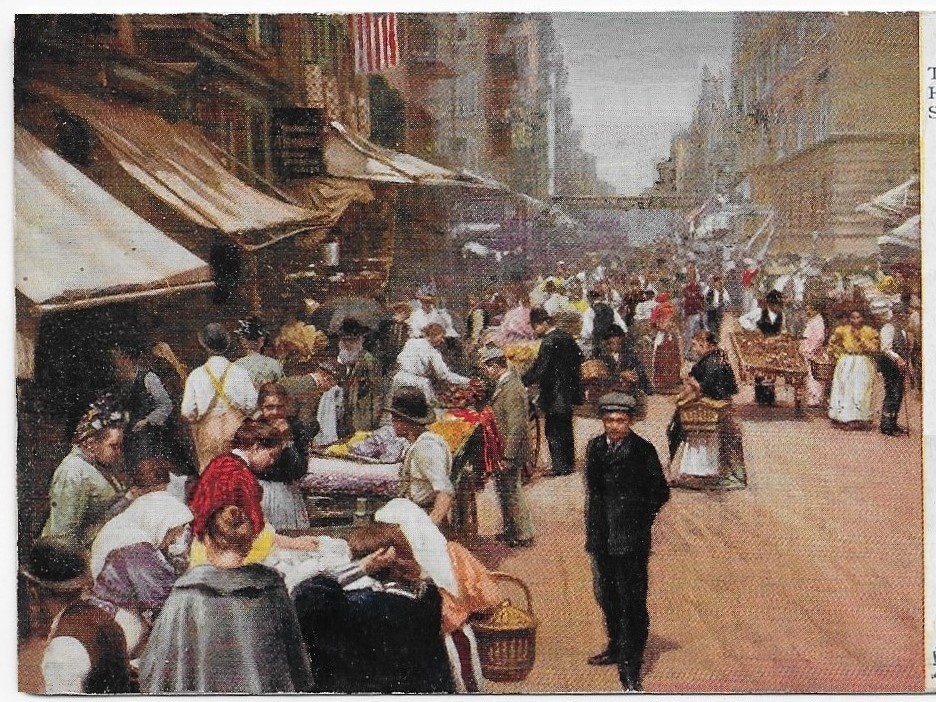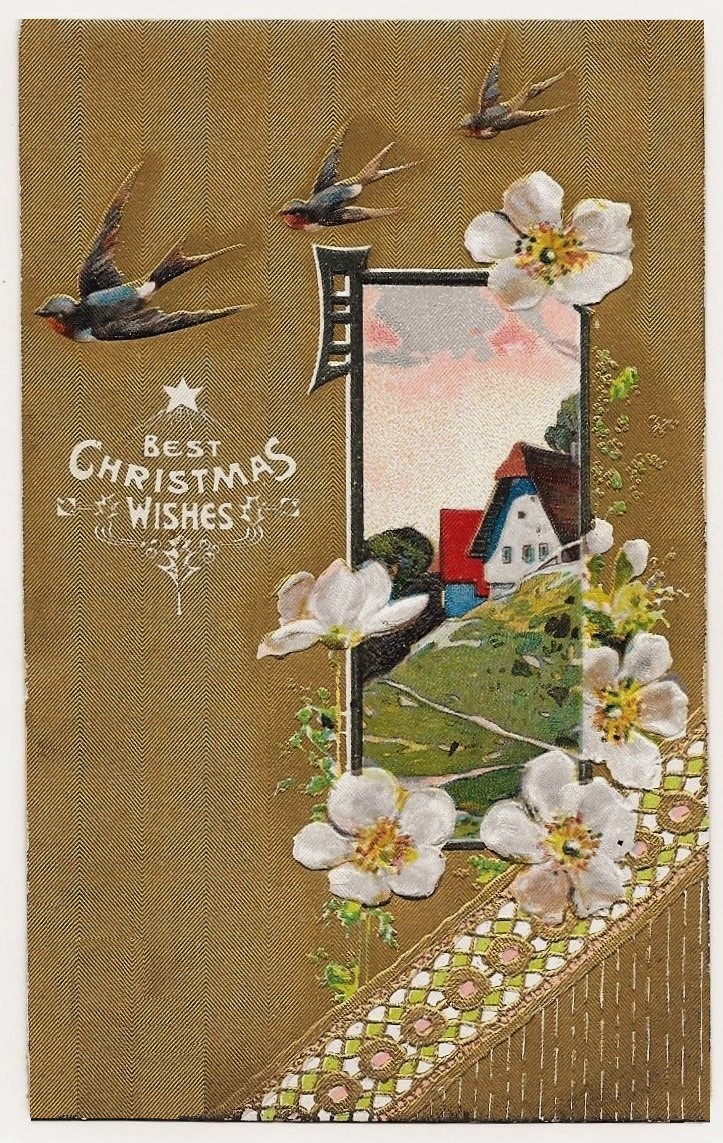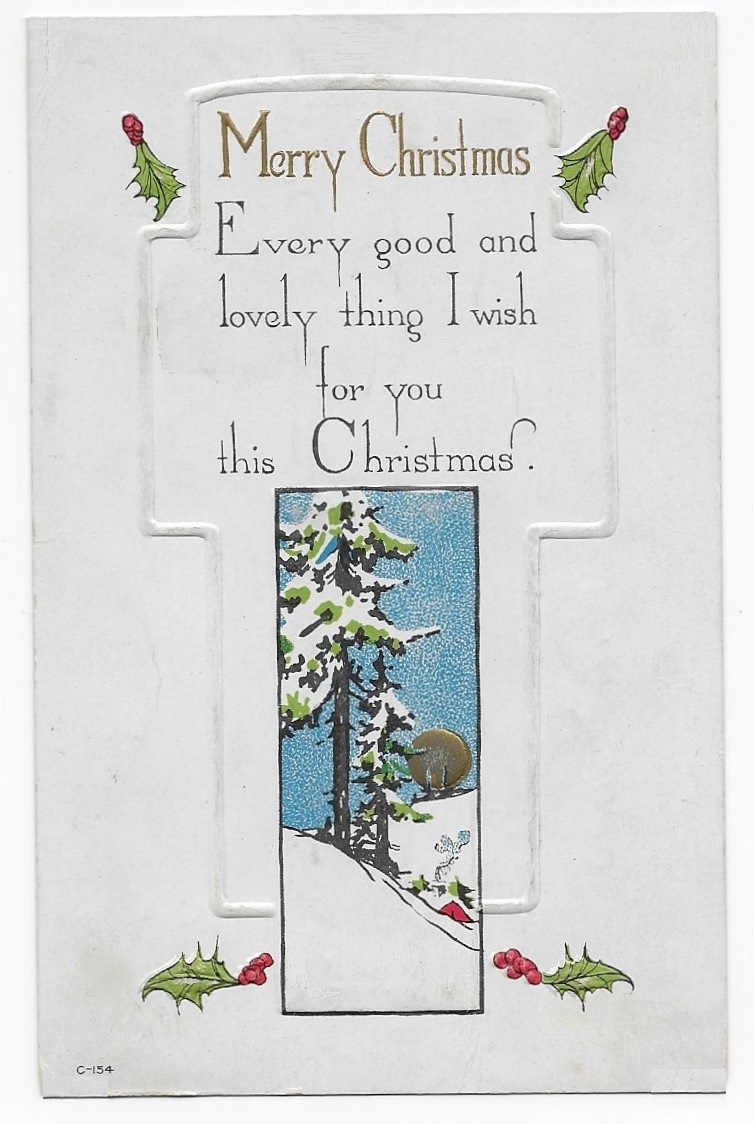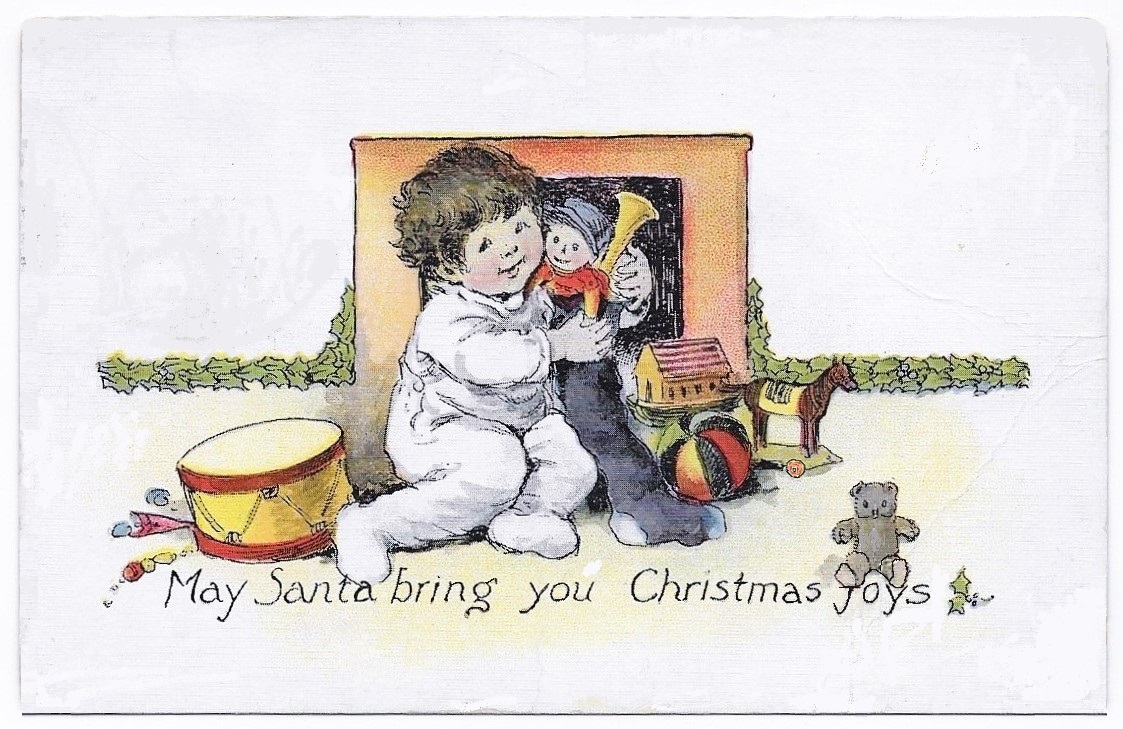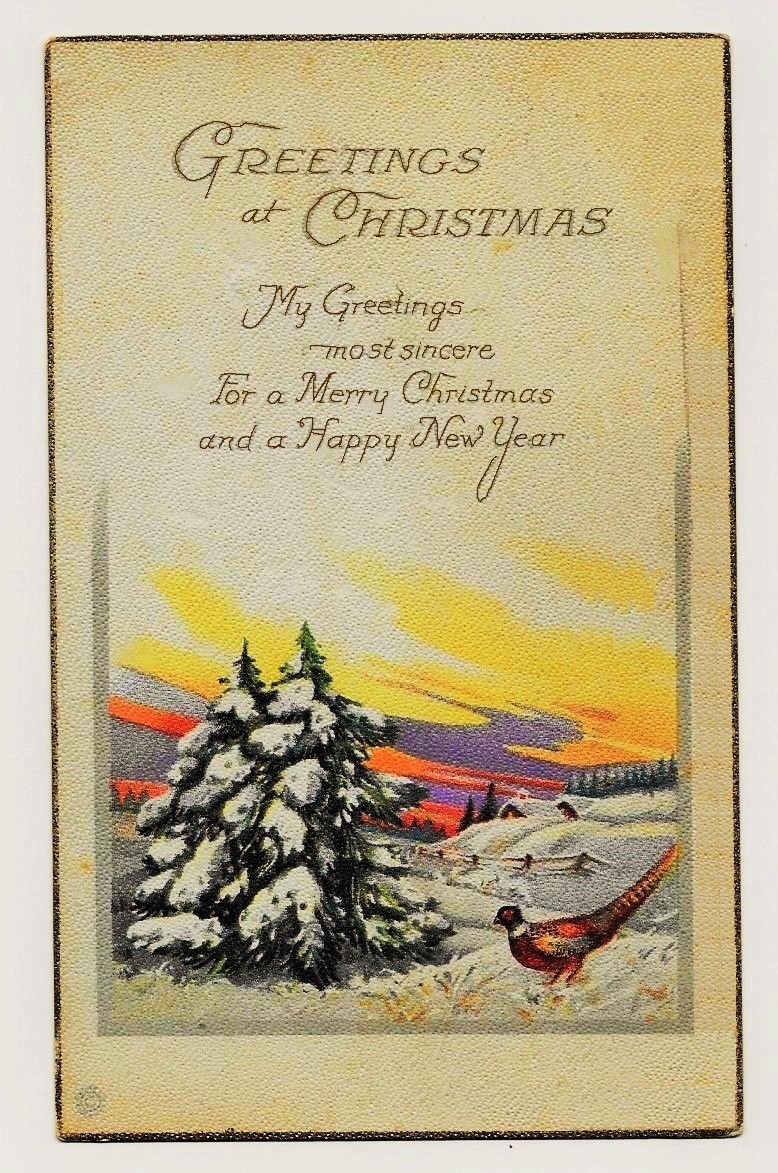Miss Ethel L. Healy lived in Concord, the capital city on the Merrimack River in central New Hampshire.
https://en.wikipedia.org/wiki/Concord,_New_Hampshire
In October of 1905, Ethel received a postcard from an unidentified friend.
The postcard was mailed from Worcester, the center of commerce and transportation in central Massachusetts.
https://en.wikipedia.org/wiki/Worcester,_Massachusetts
The face of the postcard, however, displays a colorful view of an immigrant community in New York City.
Most Americans are aware of how waves of immigration, especially those coming through the Immigration Center at Ellis Island, shaped the neighborhoods of New York City and the national culture.
https://en.wikipedia.org/wiki/Ellis_Island
In other postcard stories, we saw references to the large German-American communities of New York City, and to the later growth of Chinatown.
Hester Street, in the lower East Side of Manhattan, became a center of Jewish immigrant life in the last decades of the 19th century.
The first Roumanian-American Synagogue was established on Hester Street in 1881.
Hester Street was featured in several books and movies about the Jewish immigrant experience and became known for the preservation of Old-World customs, the tenement housing, open-air markets, and Yiddish language.
https://en.wikipedia.org/wiki/Hester_Street_(Manhattan)
The illustration on the face of the postcard is titled, “The Ghetto” – which reflects both the barriers to full integration into the wider society of New York and to the bonds that preserved the features of community life from Europe.
The postcard photograph was copyrighted and published by the English firm of Raphael Tuck & Sons.
Today, a few kosher restaurants and delis remain around Hester Street, but the neighborhood is no longer characterized by traditions of the 19th century.
(The contemporary open-air market near Hester Street is more reflective of the growth and influence of Chinatown.)
Below, I have shared a painting (from the linked article on Wiki) by the artist, George Benjamin Luks.
https://en.wikipedia.org/wiki/George_Luks
The painting, now in the Brooklyn Museum of Art, shows a close-up view of “Street Scene” that could be Hester Street.
Ethel seems to have enjoyed the view of Hester Street, as she preserved the postcard in good condition throughout her life.
One hopes that she, and the sender of the postcard, had opportunities to sample the rich ethnic traditions of New York neighborhoods.
